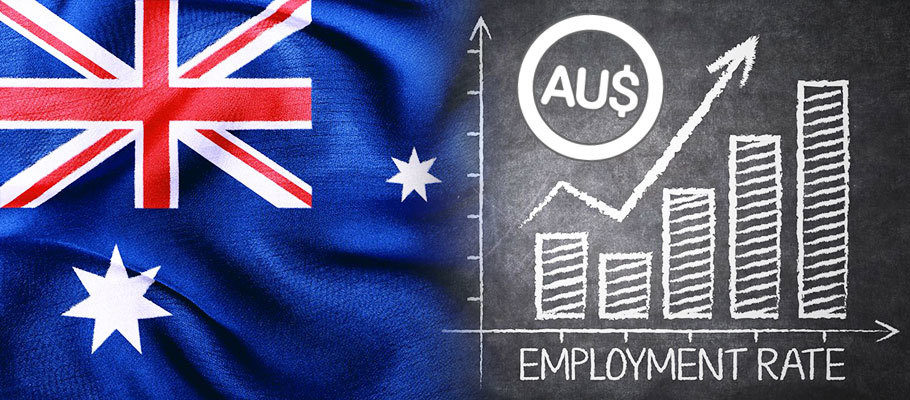
Published: January 27th, 2020
– Reports coming out of the Asian markets this past week are mixed. While the spread of coronavirus within China and outside its borders has caused panic in some segments, the downward trajectory of the jobless rate in Australia buoyed the Aussie dollar…
The Aussie dollar was the strongest currency across the forex boards. The rise of the Australian currency was as a result of the downward trend in the Australian jobless rate. The latest job figures that are bigger than expected hoisted the Australian dollar to the top. By the close of business on Friday, the AUD/USD had rallied hard to hit 0.6880.
The Australian employment outdid the forecasts for the second straight month. The latest figures have pushed the jobless rate to its lowest point in nine months. Pundits think that these improvements may delay a near-term cut in the interest rates of the Reserve Bank of Australia (RBA).
A senior economist working with Capital Economics Marcel Thieliant, however, holds a different opinion. He said that the RBA may still slash the rates during its February 4, policy meeting. He reasons that the rate of growth of wages is impressive but still inadequate in meeting the inflation targets.
He, however, agrees that with the reduction in the space capacity that has been in the labour market, the RBA now has less urgency to cut the base rates.
The data released on Thursday showed that Australia created 28,900 new jobs in December. These figures surpassed the forecast of 15,000 and come on the backdrop of a strong gain of 34,400 new jobs posted in November.
The rates bring the proportion of the unemployed in Australia to 5.1%. This is the lowest figure since March 2019.
A closer look at the numbers, however, indicate that there may be little to smile about. All the new jobs created are part-time positions. Besides, the full-time positions fell by 300.
The country’s central bank has remained steadfast in its belief that the jobless rate should fall to at least 4.5% for the economy to register any meaningful wage growth. Australia’s wage growth has been stuck at 2.3% for about a year or more. The board of directors of RBA has always prioritized the concerns around unemployment. During the last meeting in December, they promised to review the policy on rates if the unemployment outlook deteriorated.
The slump in the rate of unemployment is a blessing to the government of Prime Minister Scott Morrison. The prime minister has come under a barrage of fire for his lackluster reaction to the crisis of bushfires.
The government, however, may need to do more to sustain the little growth achieved this far. From the look of things, the worse effects of the bushfires may soon be manifesting. Already, Melbourne and Sydney are smothered in smoke and the tourists’ figured around the apex of the summer holiday season were not so inspiring. Besides, consumer confidence is also darkened as thousands worry about the sluggish wages and the rising weight of debt.
Economists estimate that the cost of the crisis could cost the Australian economy some A$5 billion and shave up to 0.25 points off the projected gross domestic product in Q4 of 2019 and Q1 of 2020.
After closing Wednesday and Thursday with minor losses, the AUD/USD got a grip to hit a high of 0.6880 during the Asian trading hours. It later consolidated to stand at 0.6868 during the European session. The latter figure represents a growth of 0.35%.
The Aussie dollar stabled against other currencies as well. The AUD/EUR pair lost ground from 1.6204 to settle at 1.6145. On the other counters, the story was not so different. The Japanese yen did just as dismally against the Aussie dollar with the AUD/JPY trading between 75.25 and 75.14 from the day’s high of 75.49.
As earlier noted, the jobs report may not muster enough strength to entirely price out the expectations of for a rate cut. The Australian dollar, as such, may surrender some of its gains in the weeks to come.
Because of these latest market developments, the Commonwealth Bank of Australia (CBA) now predicts that the RBA will lower its benchmark lending rates by 25 points to 0.5% at the beginning of Q2 of 2020. This is a deviation from the earlier prediction that RBA may slash the rates in February during its upcoming policy meeting.
ANZ Research, an offshoot of Australia and New Zealand Banking Group Limited agrees with CBA. They amended their prediction on a comment they appended to the latest report they had earlier released regarding interest rates.
In the comment, ANZ said that they no longer foresee a rate cut in February. They, however, said that they think further rate cuts are likely throughout 2020. They cited soft business investment and the continued weak consumer spending as indicators. Saying that the match towards lower unemployment may be interrupted at a point, they added that the two aspects above will prove vital in contradicting the policy objectives of the RBA.
The yields of the Australian government bonds responded to the above-expected Australian jobs report to gain substantially. At the time of writing this piece, the gains on the 10-year bond had risen to 1.13% which represents a surge of two basis points. Before the report was released, the said bond had been hovering around 1.09%.
The two-year bond which tends to be sensitive to fluctuation in interest rates had gained four basis points to stand at 0.75%.
Australia released its impressive December jobs report. The Aussie dollar reacted to the good news by towering above all the major currencies. The news means that the RBA may go slow on the rates cut that had been predicted to happen in February. However, are the numbers promising enough to sustain the upward trajectory that the Australian dollar has taken?